Do you want an eco-friendly garden but don’t have the time or energy to deal with planting and maintaining annual plants? Or maybe you’re just lazy like me. Either way, perennials are the solution for you!
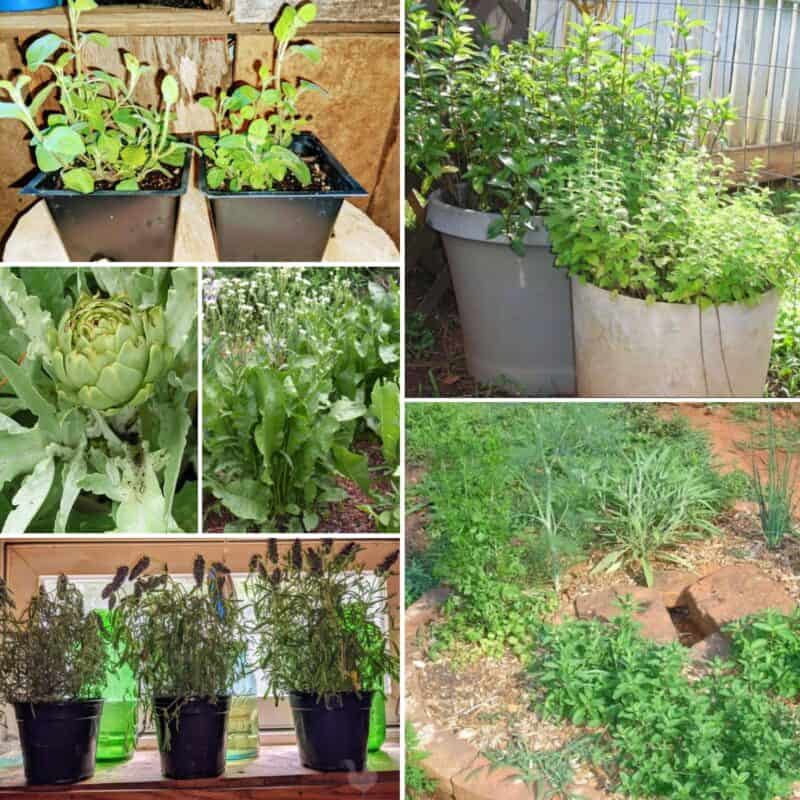
Perennial crops come back year after year with little maintenance, which makes them perfect for those who love gardening but don’t want the hassle of constant upkeep.
Check out this megalist of perennial crops for the lazy gardener – they will make your garden eco-friendly and low maintenance, all at the same time.
Benefits of Growing Perennial Crops
Perennial crops are those that live for more than two years, as opposed to annual crops, which must be replanted each year.
Perennial crops have a number of advantages over annuals.
First, they require less maintenance, since they do not need to be replanted each year.
Second, they are often more resilient to pests and diseases, since they have deeper root systems that are better able to access water and nutrients.
Third, perennials typically have a longer growing season than annuals, meaning that they can produce more food over the course of a year.
For these reasons, perennial crops can be an excellent choice for large-scale farmers and backyard gardeners alike.
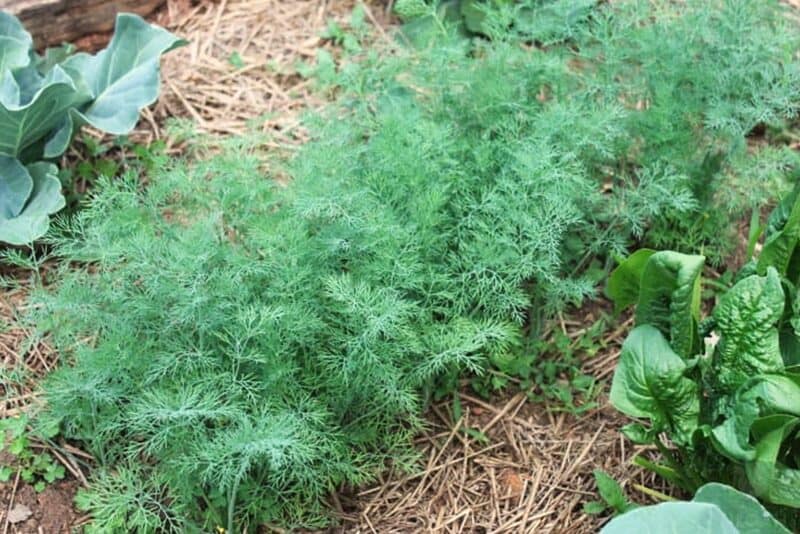
1. Dill
Dill is a popular herb that can be used in a variety of dishes, from soups and stews to salads and dips. And don’t forget about those pickles!
Dill is easy to grow, making it a great choice for both beginning and experienced gardeners.
Dill is typically grown as an annual, but with a little care, it can also be grown as a perennial. Start by planting dill in early spring, using either seeds or transplants.
Dill prefers full sun and well-drained soil, so be sure to choose a spot that meets those requirements.
Once the plants are established, they will need to be thinned to give them room to grow. When the plants begin to flower, cut back the foliage to encourage bushier growth.
With proper care, dill will come back year after year, providing you with a never-ending supply of fresh herbs.
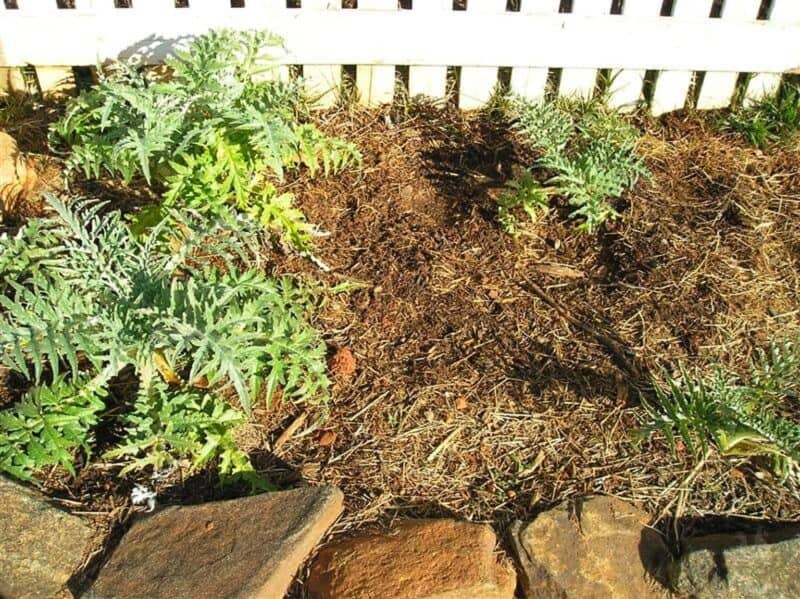
2. Jerusalem Artichoke
Jerusalem artichokes are an excellent choice for anyone looking to add some variety to their garden.
Not only are these perennial tubers easy to grow and maintain, but they also come with a host of nutritional benefits.
These tubers are loaded with antioxidants, which can help boost our overall health and reduce the risk of chronic diseases like heart disease and cancer.
Jerusalem artichokes are also a great source of vitamins and minerals, including vitamin C, iron, magnesium, and potassium.
And unlike some other types of garden vegetables, Jerusalem artichokes actually grow better in colder temperatures (they’re hardy in USDA zones 3-9).
So whether you’re a seasoned gardener or just starting out on your gardening journey, planting some Jerusalem artichokes is sure to be a rewarding experience!
3. Rosemary
Rosemary is a versatile herb that can be used in everything from soups and stews to roasted meats and vegetables.
In addition to its culinary uses, rosemary is also known for its ability to repel pests and improve soil quality.
While rosemary is typically grown as an annual, it can also be grown as a perennial in certain climates.
When growing rosemary as a perennial, it is important to choose a location that receives full sun and has well-draining soil.
Rosemary can also be propagated from cuttings, so if you know someone with an established rosemary plant, you can take cuttings and grow your own.
With a little care and attention, rosemary can be a delightful addition to your garden for many years to come.
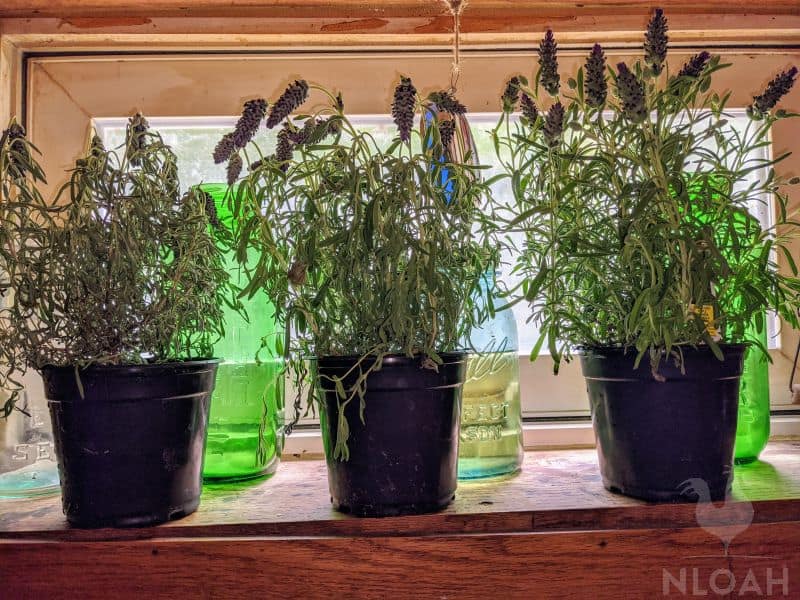
4. Lavender
Lavender is a beautiful and fragrant herb that has long been prized for its remarkable properties. Not only does it have a wonderful scent, but it is also known to have medicinal and antiseptic qualities.
In the garden, lavender is easy to care for and can thrive in a wide range of conditions. However, it is important to choose the right variety of lavender for your climate.
Some lavenders are annuals, while others are perennials. If you live in an area with cold winters, it is best to choose a perennial variety that will come back year after year.
English lavender (Lavandula angustifolia) is a good option for colder climates, as it is hardy and can tolerate temperatures as low as -20 degrees Fahrenheit.
In contrast, French lavender (Lavandula stoechas) is not as cold-tolerant and may need to be grown as an annual in cooler areas.
No matter what variety you choose, lavender is sure to add beauty and fragrance to your garden.
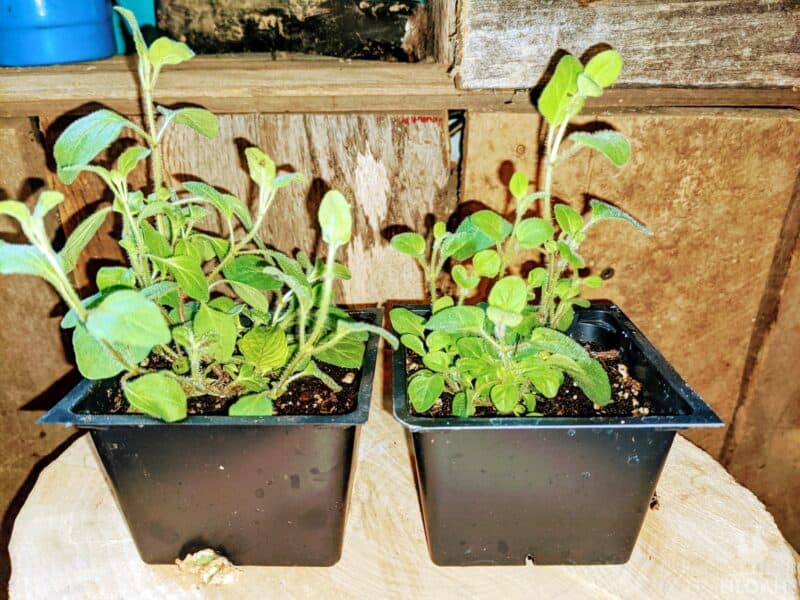
5. Oregano
Growing oregano as a perennial can be a great way to add flavor and utility to your garden. This fragrant herb is easy to grow, resilient against many common pests and diseases, and produces an abundance of tasty leaves.
In addition, oregano has a range of health benefits, including its ability to boost the immune system, reduce inflammation in the body, and even help to fight stress.
Whether you are a seasoned gardener or just starting out, growing oregano as a perennial is a great way to enhance your garden experience and reap the numerous benefits of this versatile herb.
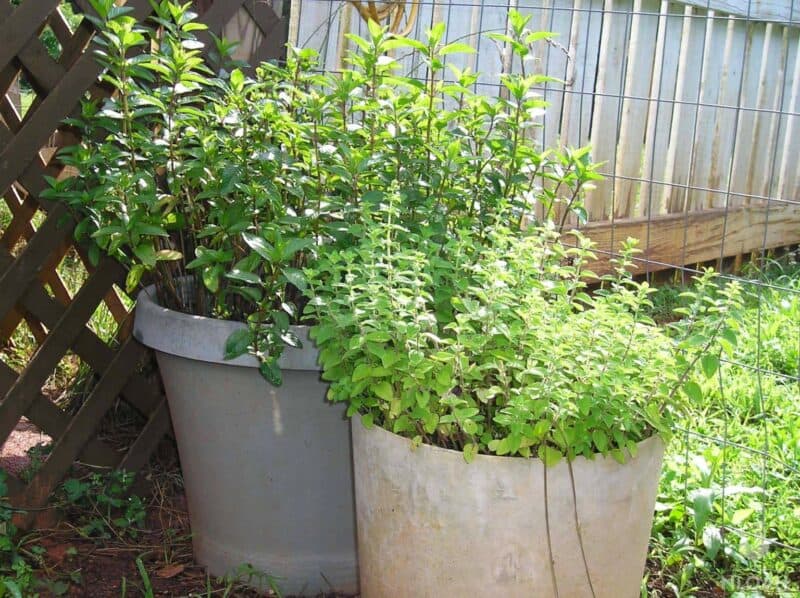
6. Mint
Growing mint as a perennial can be a great way to add some fresh flavor and aroma to your garden. Mint is an ideal candidate for this, as it is both easy to grow and highly resilient.
In order to successfully grow mint as a perennial, it’s important to plant the seeds in an area that receives plenty of sun, with well-drained soil.
Once established, mint will naturally spread via its roots, so it’s important to keep it confined within boundaries like a border or raised bed.
Despite its aggressive growth patterns, mint remains a popular choice for gardeners thanks to its ability to thrive in most climates and its ability to enrich soil with nutrients and organic matter over time.
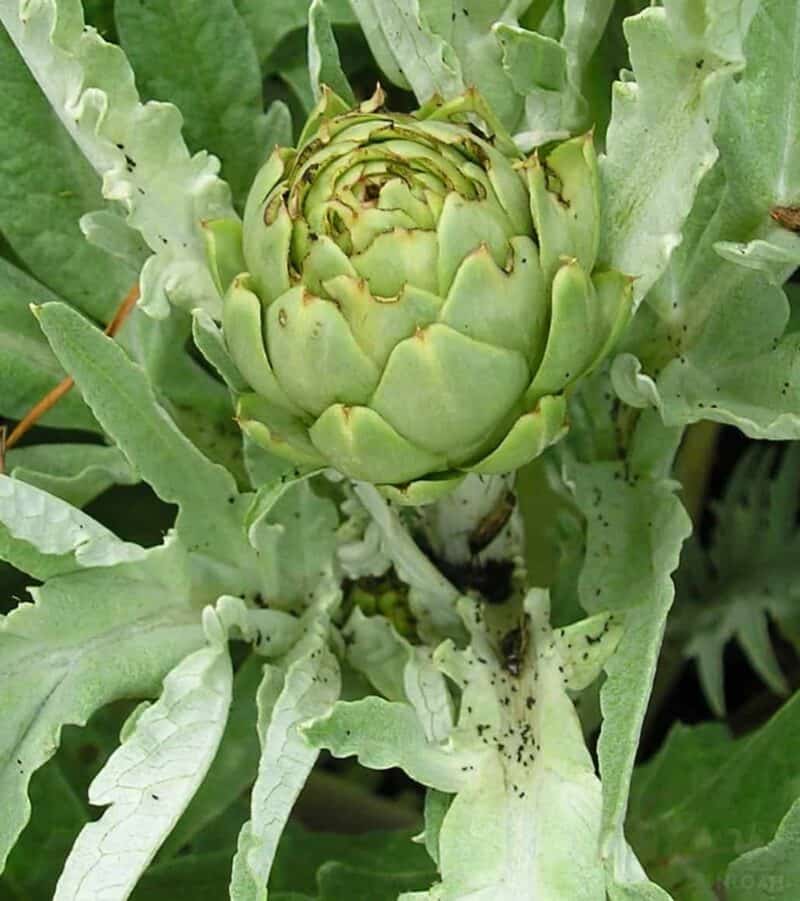
7. Artichokes
Growing artichokes can be challenging, especially for gardeners who are new to this perennial crop.
Artichokes require a lot of care and attention, from regular watering and fertilizing your artichokes, to protection from pests and harsh weather conditions.
However, with the right know-how and a little patience, it is possible to successfully grow artichokes as a perennial, allowing you to harvest their delicious buds all year long.
To start, it is important to plant your artichoke plants in full sun or partial shade. This will help them get the nutrition they need and protect them from temperature extremes.
Be sure to keep your soil evenly moist but never soggy. Adding plenty of well-aged compost each spring can help boost soil quality and encourage healthy root growth.
With these simple tips, you too can grow beautiful artichokes that will last season after season!
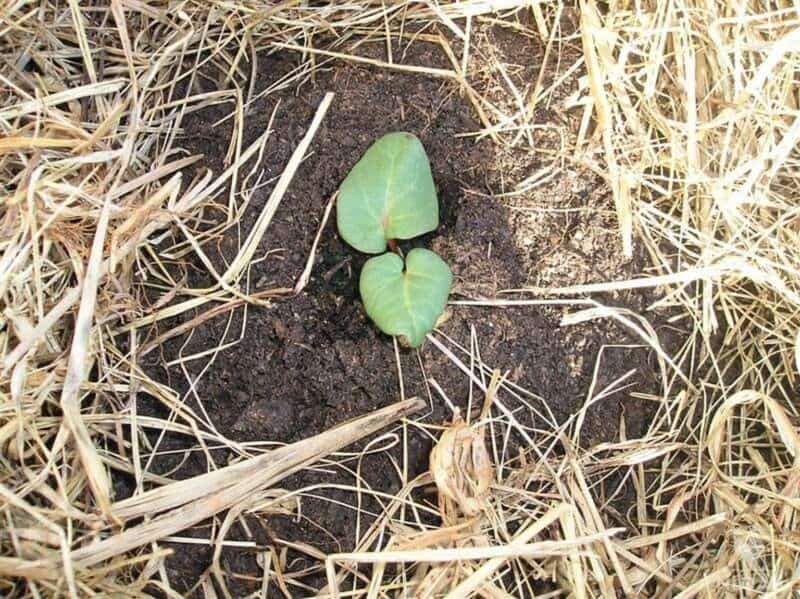
8. Rhubarb
Rhubarb is a hardy, perennial plant that is easy to grow and can provide a bounty of fresh produce for years to come.
The key to growing successful rhubarb is selecting the right planting location and providing ample nutrients and water. It’s generally best to plant rhubarb in full sun or partial shade, where it will get plenty of sunlight for healthy growth.
You should also ensure that the soil is rich with organic matter and well-draining, as this will encourage good root development and help prevent disease.
In addition, regular watering will help your rhubarb plants thrive and produce delicious stalks throughout the season.
If you’re willing to put in a little work now, then growing rhubarb can be a rewarding experience that pays off with years of tasty harvests!
9. Tree Kale
Growing Tree Kale as a perennial has many benefits.
First and foremost, this hardy plant is able to withstand a wide range of temperatures, allowing it to flourish year after year in most climates.
In addition, Tree Kale is extremely low-maintenance and pest-resistant, making it ideal for those with busy schedules or limited space in the garden.
Finally, unlike other popular perennials like lavender or roses, Tree Kale does not require pruning or special care in order to maintain good health.
With all these advantages, there’s no doubt that Tree Kale is a fantastic option for anyone who wants a beautiful and long-lasting perennial garden – particularly one that is edible!
10. American Groundnut
The American groundnut is a hardy, drought-tolerant plant that is native to the eastern United States. It is a member of the peanut family and has been used as a food source for centuries by Native Americans.
The plant grows best in sandy soils and has a deep taproot system that helps it to access water and nutrients from deep in the soil.
The plant produces small, yellow flowers that turn into edible nuts that are encased in a hard shell.
The nuts can be roasted and eaten whole, or they can be used to make peanut butter and other products.
Groundnuts are an excellent source of protein, fiber, and vitamins, making them a healthy addition to any diet.
Because of their many uses and nutritional benefits, American groundnuts are becoming more popular as a food crop.
Farmers are beginning to grow the plants as perennials, which means they can be harvested multiple times each year.
This practice is not only more efficient for farmers, but it also helps to preserve the soil and reduce the need for chemical fertilizers and pesticides.
As American groundnuts become more available, they are sure to become a staple in many homes.
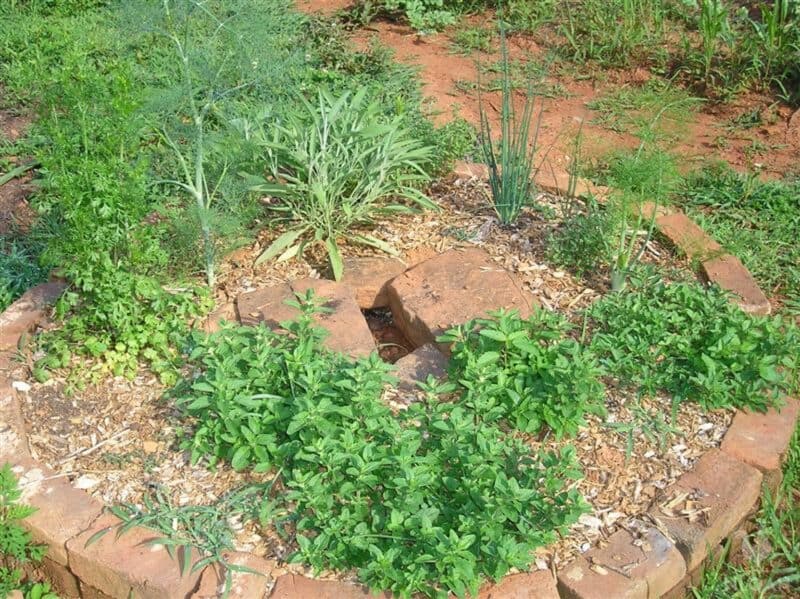
11. Fennel
Growing fennel as a perennial can be a great way to add flavor and nutrients to your garden.
Fennel is an herb that has culinary and medicinal uses, and it thrives in both sunny and shady conditions.
Moreover, fennel is relatively easy to grow from seed or starts, making it an ideal plant for beginner gardeners.
With the right care and attention, a fennel plant will gradually take root in your garden and provide you with fresh leaves, stems, seeds, and bulbs throughout the year.
Whether adding a splash of color or giving your meals a unique flavor, growing fennel as a perennial is sure to be a rewarding experience!
12. Ramps
These beautiful plants grow as perennials, meaning that they will come back year after year without the need for replanting.
With their broad, green leaves and delicate white flowers, ramps are both aesthetically pleasing and well-suited for a variety of environments.
Not only do they thrive in sunny locations with rich, well-drained soil, but they are also remarkably resilient and can adapt to different climates and growing conditions.
So if you’re looking for a simple but effective way to add interest and vitality to your garden, consider growing ramps as a perennial plant that will bloom again and again throughout the seasons.
13. Radicchio
Radicchio is a vegetable with a bitter, tangy flavor. It is typically grown as an annual, but in some regions it can be grown as a perennial.
Perennial radicchio requires less effort than annual radicchio, as it does not need to be replanted each year.
However, it is important to choose the right variety of radicchio for your climate, as some varieties are more heat-tolerant than others.
Radicchio can be grown from seed, but starting with transplants will give you a head start on the growing season.
When planting radicchio, space the plants 18-24 inches apart. Water the plants regularly, and apply a layer of mulch to help retain moisture and prevent weeds.
Radicchio is ready to harvest when the heads are 3-4 inches in diameter. To harvest, cut the heads at the base of the plant.
Perennial radicchio is a low-maintenance crop that can provide you with fresh leaves for salads and other dishes all season long.
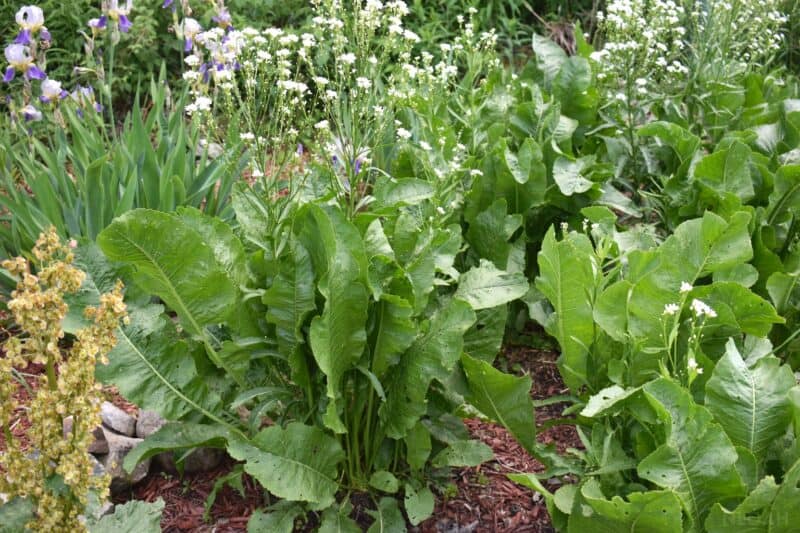
14. Horseradish
Many gardeners choose to grow horseradish as a perennial. Horseradish is a root vegetable that is commonly used as a condiment. The plant produces large, white roots that are slightly spicy.
Horseradish is relatively easy to care for and can be grown in most climates.
One of the advantages of growing horseradish as a perennial is that it doesn’t require much attention.
Once the roots are established, they can be left alone for long periods of time. However, horseradish does need to be watered regularly.
The roots should also be mulched in the winter to protect them from the cold.
Overall, horseradish is a low-maintenance plant that can provide years of enjoyment.
15. Egyptian Onions (Walking Onions)
Egyptian onions, also known as walking onions, are a hardy and versatile plant that can be easily grown as a perennial.
These onions have long, slender leaves and produce a cluster of small white flowers during the spring.
Thanks to their extensive root systems, Egyptian onions are able to thrive even in dry and windy conditions, making them a great choice for gardeners looking for low-maintenance plants.
Additionally, these onions have the ability to store nutrients within their bulbs throughout the winter, allowing them to quickly regrow when the weather warms up again in the spring.
With proper care and attention, growing Egyptian onions as a perennial can be an easy and rewarding experience that will provide long-lasting benefits for your garden.
16. Malabar Spinach
Malabar spinach is a popular leafy green vegetable that is often grown as an annual. However, with a little care, it can also be grown as a perennial.
One of the key things to remember when growing malabar spinach as a perennial is to provide plenty of water. This plant loves moisture and will not do well in dry soils.
In addition, it is important to give the plant room to spread. When planting, leave at least two feet of space between each seedling.
With proper care, malabar spinach will flourish and provide you with fresh greens for many years to come.
17. Nine Star Perennial Broccoli
Growing nine star perennial broccoli is a great way to get the benefits of this versatile vegetable without having to deal with the hassle and expense of replanting every year.
Unlike traditional broccoli, which is grown as an annual, nine star perennial broccoli features long, lush stems that remain productive throughout the growing season.
This hardy plant also boasts broad leaves that keep soil in place and help prevent erosion.
Additionally, its deep roots draw nutrients from the ground, allowing it to thrive even in tough conditions.
Whether you’re looking for a way to boost your vegetable garden or simply want to add some beauty to your yard, growing nine star perennial broccoli is definitely worth considering.
With its pretty blooms and abundant harvest, this unique plant is sure to become a favorite!
18. Good King Henry
King Henry is a perennial leafy vegetable also known as good king Henry, Lincolnshire spinach, markery, or poor man’s asparagus. It is a member of the Chenopodiaceae family, which includes beets, chard, and spinach.
The edible part of the plant is the young shoot which is harvested in the spring.
King Henry has been cultivated since the 16th century and was a common vegetable in England until the early 20th century. It fell out of favor due to its long cooking time and lack of flavor.
However, it has recently been rediscovered by chefs who appreciate its unique flavor and nutritional value.
Good king Henry is a nutrient-rich vegetable that is high in iron and vitamins A and C.
It can be steamed, boiled, sauteed, or used in soups and casseroles. When cooked properly, it has a delicious nutty flavor that pairs well with other vegetables.
Growing good king Henry is easy and requires little maintenance. It is a hardy plant that can tolerate partial shade and poor soil conditions.
Once established, it will produce an abundance of shoots for many years to come. If you are looking for a unique leafy green to add to your garden, consider good king henry.
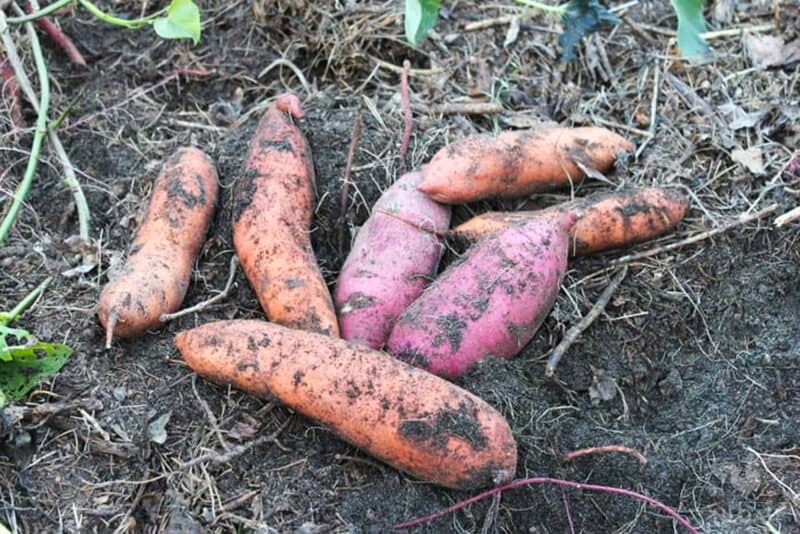
19. Sweet Potatoes
As anyone who has had experience growing sweet potatoes knows, these versatile vegetables are surprisingly hardy.
Sweet potatoes are capable of thriving in a wide range of climates and soil types, and believe it or not, they actually grow best when treated as perennials.
That is, sweet potatoes can be planted once and left to overwinter in the ground year after year. This has numerous benefits, including lower labor costs and higher yields over time.
In addition, treating sweet potatoes as perennials also gives us more control over environmental conditions like temperature and moisture levels, allowing us to produce reliable harvests even under less-than-ideal growing conditions.
20. Asparagus
Last but not least, the perennial crop probably all of us are most familiar with – asparagus.
Asparagus is a perennial vegetable that can provide many years of harvests with proper care.
Unlike annual vegetables, which must be replanted each year, asparagus crowns can produce new spears for up to 15 years.
When picking a spot to plant asparagus, choose an area that gets full sun and has well-draining soil.
Asparagus prefers a neutral to slightly alkaline soil, so you may need to add some lime to the soil before planting.
To plant asparagus crowns, dig a trench about eight inches deep and 18 inches wide. Then, spread the roots of each crown in the trench and cover it with two inches of soil.
As the asparagus plants grow, fill in the trench with more soil until it is level with the surrounding ground. With a little patience, you can enjoy fresh asparagus spears for many years to come.
How to Plant Perennial Crops
When it comes to planting perennial crops, timing is everything. The ideal time to plant most perennials is in the early spring, when the soil has had a chance to thaw and become workable.
Before you plant your crops, it’s important to prepare the ground by tilling and adding fertilizer as needed. This will ensure that the soil is rich in nutrients and well-suited for supporting new roots.
Once you’ve prepared the ground, it’s important to choose your plants carefully. Look for sturdy seedlings that are vigorous and adaptable to different types of soil.
And be sure to give each plant plenty of space – overcrowding can lead to stunted growth or disease.
Finally, once your perennial crops have been planted, make sure to keep them well-watered and weeded throughout the growing season. With a bit of care and attention, you’ll be rewarded with bountiful harvests year after year!
If you’re looking for a low-maintenance garden, perennials are the way to go. With proper planning, you can find plants that will come back year after year with little effort on your part.
Hopefully, this list of perennial crops has given you some ideas for your own garden. Try some of these tips to make gardening even easier!

Rebekah is a high-school English teacher n New York, where she lives on a 22 acre homestead. She raises and grows chickens, bees, and veggies such as zucchini (among other things).
